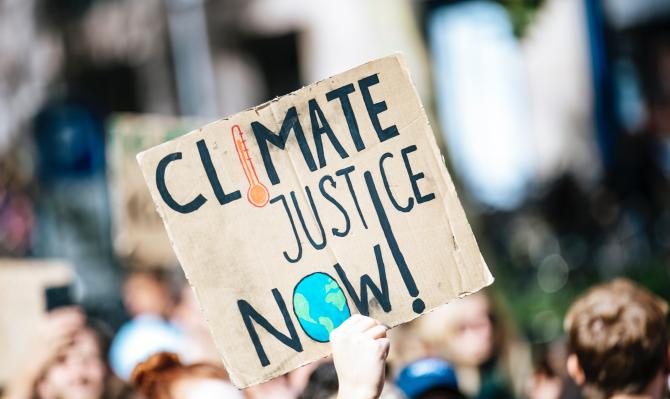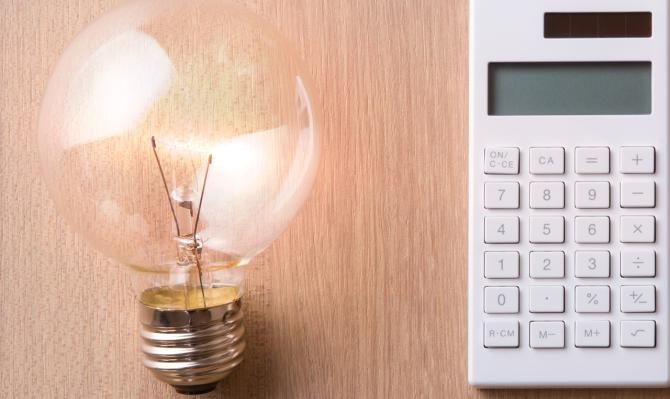European household energy bills in the bleak midwinter
The energy crisis has led to an increase in energy prices which is not affecting all households alike, since their resources and initial situation are not the same in all cases.

The energy crisis has led to an increase in energy prices which is not affecting all households alike, since their resources and initial situation are not the same in all cases. In this article, we analyse the level of energy poverty among European households and how the portion of household budgets spent on energy bills has increased in 2022.
A household is considered to be in a situation of energy poverty when it cannot meet all of its energy needs.1 This situation is not only price-dependent, but is the result of a combination of three factors: low income, high expenditure on energy services (relative to income), and low energy efficiency in homes. Thus, measuring the energy poverty of households is no easy task, as we need to analyse multiple elements and there is no single measure that summarises the situation. Two indicators from surveys of household living conditions which do a reasonable job of summarising the problem are households’ inability to keep their home adequately warm and delays in paying their energy bills.2 In the EU, 6.9% of households were unable to keep their homes at an adequate temperature in 2021 and 6.4% were late in paying their energy bills. However, there are significant differences in these two measures from country to country, and there is generally a higher percentage of households in difficulty in southern Europe (see first chart).

Another way to analyse energy poverty is by looking at expenditure on energy bills, as this can reveal difficulties in meeting household energy needs.3 In the EU-27, 13.4% of households had a level of energy expenditure that was below half the national median (in 2015, the latest year with comparable available information), which may be an indication of what is often referred to as «hidden energy poverty». On the other hand, if we measure energy expenditure as a proportion of household income, we see that 15.1% of households had an energy expenditure to income ratio of over twice the national median, a level generally considered «disproportionate». In both metrics, the dispersion among European countries is less pronounced, indicating that energy poverty measured on the basis of household spending was more similar between countries.4 In Spain, the situation in both metrics in 2020 had not changed substantially from the 2015 data: 10.3% of households had a very low level of expenditure (13.0% in 2015) and 16.8% of households had a level that was disproportionate to their income (14.2% in 2015).
As we can see, energy poverty is a multidimensional phenomenon, so it is not easy to estimate how the current crisis is affecting each element. Measures such as the inability to keep the home adequately warm depend, above all, on the household already being in a precarious situation to begin with. Therefore, according to simulations by the European Commission,5 the rally in energy prices due to the current crisis is having a relatively small impact on this aspect. On the other hand, these higher prices are having a more substantial impact on the measures related to the level of expenditure.6
- 3. EU Energy Poverty Hub of the European Commission.
- 4. Sweden would be an exception, with worse levels of energy poverty when measured on the basis of expenditure, although on the other hand it scored better in the other measures (maintaining the home at an adequate temperature and delays in paying bills).
- 5. See B. Menyhért (2022). «The effect of rising energy and consumer prices on household finances, poverty and social exclusion in the EU». Publications Office of the European Union. Luxembourg, doi:10.2760/418422, JRC130650.
- 6. The expenditure-based energy poverty variables used in the second chart are measures of the relative position of household spending. Therefore, according to calculations by the European Commission, given that the price increase is fairly similarly for everyone, the relative position between them does not change very much.

We focus our analysis of the impact of rising energy bills on the euro area’s four major economies (Germany, France, Italy and Spain).7
For context, in 2020 households in France spent 4.8% of their income on energy bills, while in Germany the figure was 5.6% and in Italy and Spain, around 6.0%. From this starting point, energy prices have sky-rocketed (+72% increase since 2021), although the extent of the increase has been somewhat uneven between countries: up to September 2022, in France prices prices have risen by 40%; in Germany, by more than 60%; in Spain, by around 70%, while in Italy prices have almost doubled.8 This means that, in 2022, households’ annual energy bills have increased by an average of around 500 euros in France, some 800 euros in Spain, over 1,000 euros in Germany and around 1,400 euros in Italy. As such, households are having to allocate a significantly larger portion of their income to paying their energy bills. Moreover, the divergence between countries has widened significantly: French households are still the ones allocating the smallest portion to their energy bills, at 6.5% of their income, while in Germany they spend almost 9.0%, in Spain just over 10% and in Italy, more than 12%.9
These estimates show how, in all countries, households are having to allocate a greater portion of their income to cope with the increase in their energy bills. Lower-income households will have the greatest difficulties in paying their energy bills, so it is key that support measures are targeted in order to reach all these struggling households. This aid must also be accompanied by incentives for energy saving. In this regard, price signals remain an essential element for reducing demand as much as possible and for encouraging European households to save energy in the bleak midwinter.
- 7. For this simulation, we obtain from the Household Budget Survey (HBS) published by Eurostat the composition of expenditure by income tranches in 2020 for all countries except Italy, where we use the same statistics published by its statistics office (ISTAT). The income indicators are obtained from the Income and Living Conditions (ILC) Survey, also published by Eurostat, in all cases. To estimate household expenditure on energy, we use the component CP045 «Electricity, gas and other fuels» from the HICP. This component already encompasses the general impact of the government measures implemented to reduce energy bills (e.g. VAT cuts), but not the specific aid for more disadvantaged groups.
- 8. These divergences are due, among other factors, to the composition of each country’s energy consumption. For example, Italy has the highest exposure to gas, a commodity which saw its price increase by a factor of 17: around 31% of its direct energy consumption corresponds to gas, and more than 56% of electricity generation is based on gas (22% and 35% on average in Europe, respectively).
- 9. These estimates measure how much it would cost to achieve the same level of energy consumption as in 2020 (i.e. they do not take into account possible reductions in energy consumption).





